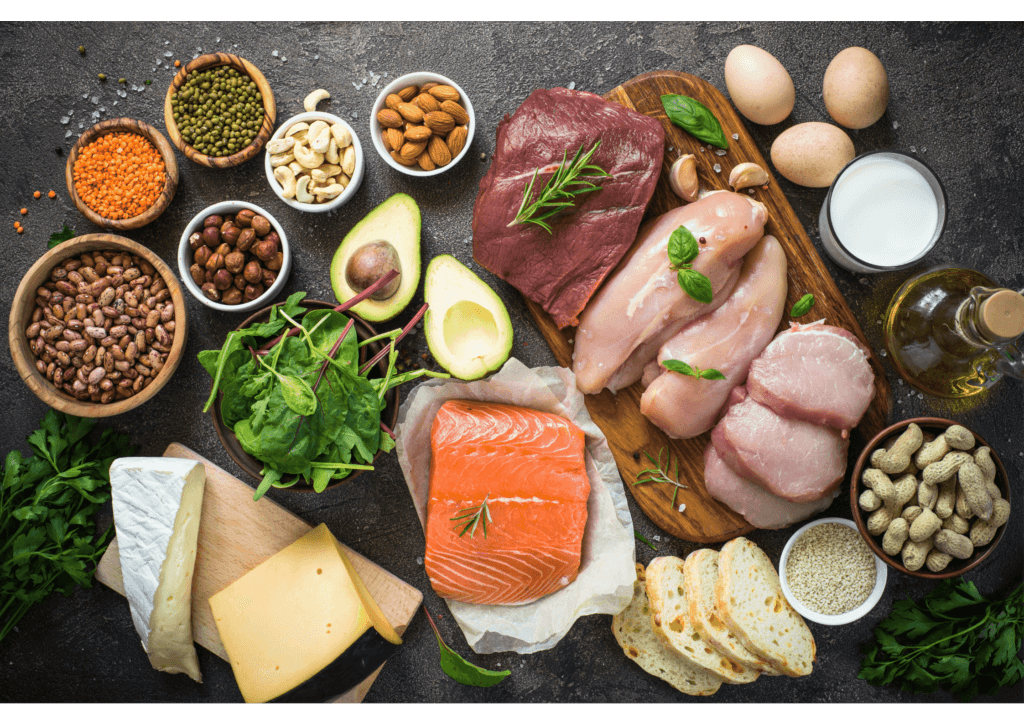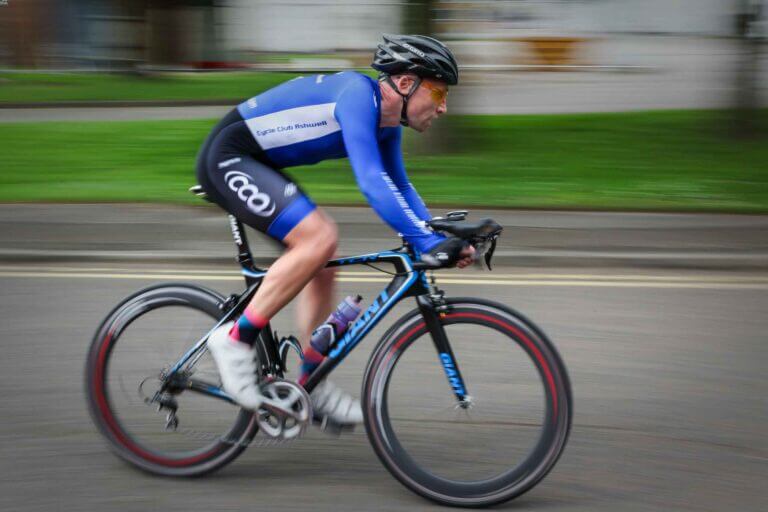Table of Contents
Cycling is a sport that demands not only physical prowess but also careful attention to training, nutrition, and equipment. Among the various dietary approaches available, the Low Carb High Fat (LCHF) diet has emerged as an intriguing option for cyclists looking to enhance their performance, endurance, and overall health.
In this article, we will delve deeper into the science behind the LCHF diet, explore its potential benefits for cyclists, and provide practical tips for those interested in adopting this approach.
Understanding the Low Carb High Fat Diet
At its core, the LCHF diet involves reducing the intake of carbohydrates while increasing the consumption of healthy fats. The primary goal is to shift the body’s metabolism from relying on carbohydrates as the main source of energy to efficiently burning fat as the primary fuel source. This shift is known as “fat adaptation.”
Typically, cyclists following the LCHF diet limit their carbohydrate intake to around 50 grams per day or less. They prioritize healthy fat sources, such as avocados, nuts, seeds, coconut oil, and fatty fish, along with moderate protein intake to support muscle health and recovery.
The science behind LCHF revolves around the body’s response to different fuel sources during exercise. Carbohydrates are the body’s preferred and most readily available source of energy, especially during high-intensity efforts like sprinting or intense intervals. During these bursts of activity, the body relies on glycogen, which is stored glucose in the muscles and liver, for immediate energy.
However, the body’s glycogen stores are limited and can become depleted during prolonged endurance exercises like long-distance cycling. When this happens, fatigue sets in, and cyclists may experience a significant drop in performance. This is commonly referred to as “hitting the wall” or “bonking.”

Enhanced Fat Adaptation for Improved Endurance
The transition to fat adaptation is not an overnight process, but once achieved, it offers several advantages for endurance-based activities like cycling. During long rides, when glycogen becomes depleted, fat-adapted cyclists can tap into their abundant fat reserves for a steady and sustained energy supply. This ability to utilize fat as fuel means avoiding the dreaded “bonk” and maintaining a consistent energy level throughout the ride.
Moreover, fat-adapted cyclists experience better preservation of glycogen stores. By relying more on fat for energy during lower-intensity efforts, they can preserve their limited glycogen reserves for high-intensity segments or crucial parts of their rides. This becomes especially valuable during multi-day events or prolonged cycling trips, where replenishing carbohydrates may not always be feasible.
The science of fat adaptation involves several physiological adaptations within the body. Over time, fat-adapted cyclists experience an increase in the number and activity of mitochondria, the energy-producing powerhouses of cells, within muscle cells. This heightened mitochondrial density enables more efficient fat metabolism and ATP production, the primary energy currency of the body.
Additionally, fat adaptation leads to increased lipolysis, the breakdown of stored fats into free fatty acids, and upregulation of fatty acid transporters, facilitating the transportation of fats into muscle cells for oxidation. As a result, the body becomes highly proficient at utilizing fat as fuel, sparing precious glycogen stores for higher-intensity efforts.
This metabolic shift not only benefits endurance but also improves the body’s ability to access energy from an almost limitless supply of fat reserves, even in lean individuals. Moreover, fat-adapted cyclists experience reduced reliance on exogenous carbohydrate sources, resulting in lower blood sugar fluctuations and improved insulin sensitivity.

Fasting and Fasted Rides for Accelerated Fat Adaptation
To accelerate the process of fat adaptation, some cyclists incorporate fasting and fasted rides into their training routine. Fasting refers to periods of abstaining from food for a set duration, while fasted rides involve cycling on an empty stomach, typically in the morning before breakfast.
Fasting and fasted rides can be effective tools for encouraging the body to switch to fat burning more efficiently. During fasting, the body depletes its glycogen stores, and when combined with fasted exercise, the reliance on fat as the primary energy source is enhanced. This process can help the body become more efficient at using fat for fuel, accelerating the fat adaptation process.
However, it’s crucial to approach fasting and fasted rides with caution. These practices may not be suitable for everyone, especially for cyclists with specific health conditions or those new to endurance training. Consulting with a healthcare professional or sports nutritionist before incorporating fasting or fasted rides into the training routine is recommended.
Additionally, it’s essential to strike a balance and avoid excessive fasted rides, particularly long ones, as they can potentially lead to overtraining and compromise recovery. Overdoing fasted rides may deplete glycogen stores excessively, making it challenging for the body to recover adequately and perform optimally in subsequent rides.
Cyclists should listen to their bodies, monitor their performance, and be mindful of their energy levels when integrating fasted rides into their training plan.

Fueling Long Rides with Fat: Practical Tips for Cyclists
Transitioning to the LCHF diet requires thoughtful planning, especially for long cycling sessions. To fuel up for extended rides, cyclists can enjoy a balanced LCHF meal before starting, focusing on healthy fats, moderate protein, and a limited amount of carbohydrates. For example, a pre-ride breakfast might consist of an avocado and spinach omelet with a side of mixed nuts and berries.
During rides, fat-adapted cyclists can carry energy-dense snacks like fat bombs (homemade mixtures of nuts, seeds, and coconut oil) or cheese cubes to sustain their energy levels without relying on frequent carbohydrate refueling. This strategic approach to nutrition ensures a constant supply of energy without the fluctuations associated with carbohydrate-fueled rides.
While the LCHF diet emphasizes reducing carbohydrate intake, some cyclists may find it beneficial to incorporate targeted carbohydrate consumption during intense efforts or high-intensity intervals to optimize performance without compromising fat adaptation. This strategy can help bridge the gap between the body’s ability to utilize fat and the immediate energy demands during short bursts of intense activity.

Fueling with LCHF for Races and Competitions
While the LCHF diet offers numerous benefits for training and endurance, fueling for races and competitions requires a different approach to ensure peak performance. During intense events, the body demands quick and readily available energy sources to sustain high-power outputs and optimize performance. Here’s how cyclists can modify their LCHF approach for race day:
1. Targeted Carbohydrate Consumption: On race day, cyclists can strategically incorporate carbohydrates to provide the immediate energy required for high-intensity efforts. About 60 to 90 minutes before the race, consuming a small portion of easily digestible carbohydrates, such as a banana or energy gel, can help top up glycogen stores without compromising fat adaptation.
2. Pre-Race Breakfast: The pre-race breakfast should strike a balance between providing some carbohydrates for immediate energy needs and maintaining the benefits of fat adaptation. Cyclists can opt for a balanced meal that includes healthy fats, protein, and a moderate amount of carbohydrates from low-glycemic sources, such as berries or whole grains.
3. During the Race: During longer races, cyclists may need to fuel with carbohydrates to sustain energy levels. This can be achieved through energy gels, sports drinks, or other easily digestible carbohydrate-rich sources. The key is to consume these carbohydrates strategically during intense efforts or when nearing depletion to optimize performance without derailing fat adaptation.
4. Post-Race Recovery: After the race, focusing on recovery remains crucial. Cyclists should prioritize protein-rich foods to aid muscle repair and a moderate amount of carbohydrates to replenish glycogen stores. The LCHF approach still applies during the recovery phase, with an emphasis on healthy fats and nutrient-dense foods.
5. Individual Experimentation: As with any dietary strategy, it’s essential for cyclists to experiment during training to determine what works best for them during races and competitions. Each athlete’s nutritional needs and preferences may differ, and finding the right balance of carbohydrates and fats for race day is a personal journey.
6. Avoid Drastic Changes: Cyclists should avoid making drastic changes to their nutrition on race day. Race day is not the time to experiment with new foods or supplements that might not agree with their digestive system. Stick to familiar foods that have been well-tolerated during training.
7. Stay Hydrated: Proper hydration is crucial during races and competitions. Cyclists should drink according to thirst cues and ensure they are well-hydrated before, during, and after the event. Electrolyte-rich drinks can help maintain electrolyte balance during prolonged efforts.

Optimizing Recovery with LCHF Nutrition
Post-ride recovery is a crucial aspect of a cyclist’s training regimen, as it directly impacts performance and overall well-being. The LCHF diet can play a significant role in facilitating efficient recovery and ensuring cyclists bounce back quickly after challenging rides.
Moderate Carbohydrates for Glycogen Replenishment
While the LCHF diet emphasizes reduced carbohydrate intake, it is essential to incorporate moderate amounts of carbohydrates after intense rides to replenish glycogen stores effectively. Consuming carbohydrates post-ride allows cyclists to restore their energy levels and prepares their bodies for future training or competition.
Choosing carbohydrates with a lower glycemic index can help maintain stable blood sugar levels and prevent sudden spikes and crashes. Leafy greens, berries, sweet potatoes, and small servings of whole grains are excellent choices for post-ride carbohydrate sources in an LCHF diet.
Protein for Muscle Repair
Protein is a critical macronutrient for post-ride recovery. It provides the essential building blocks (amino acids) necessary for repairing damaged muscle tissue. For fat-adapted cyclists, incorporating sufficient protein into their diet is essential for maintaining and supporting muscle mass, which is crucial for optimal performance.
Sources of protein in the LCHF diet can include lean meats, fish, eggs, dairy products, tofu, and plant-based protein sources like beans, lentils, and quinoa. By consuming an adequate amount of protein after rides, cyclists can enhance muscle recovery and prepare their bodies for subsequent training sessions.
Hydration and Electrolytes
Proper hydration is vital for optimal recovery. The LCHF diet may cause increased water loss due to the body’s increased use of fat as fuel. Therefore, fat-adapted cyclists must pay extra attention to staying hydrated.
Electrolytes, including sodium, potassium, magnesium, and calcium, are essential minerals that support proper muscle function and hydration. Replenishing these electrolytes post-ride helps maintain electrolyte balance and prevents cramping and fatigue.
Including electrolyte-rich foods like leafy greens, avocados, bananas, and nuts in post-ride meals can help cyclists maintain optimal electrolyte levels.

Managing Weight and Body Composition
Weight and body composition are critical factors affecting cycling performance. The LCHF diet can be a valuable tool for managing weight as it helps control insulin levels and reduces cravings for sugary, high-calorie foods. Many cyclists find that the LCHF diet aids in weight loss and facilitates achieving a leaner, more efficient body composition.
The LCHF diet’s effectiveness for weight loss lies in its ability to promote satiety and reduce overall calorie intake. By prioritizing healthy fats and moderate protein, cyclists feel fuller for longer, reducing the likelihood of overeating or snacking on high-carb, calorie-dense foods.
Furthermore, the LCHF diet helps regulate insulin levels, preventing the rapid spikes and crashes associated with high-carb diets. Stable insulin levels promote a more balanced and steady energy supply, reducing cravings for sugary or carb-heavy foods, which often lead to weight gain.

Addressing Potential Challenges and Considerations
Adopting the LCHF diet may come with some initial challenges, especially for cyclists who have been following high-carb diets for an extended period. The body is accustomed to relying on carbohydrates as the primary source of energy, and transitioning to fat adaptation may lead to a temporary dip in performance.
Cyclists might experience a sense of fatigue or reduced power output during the initial stages of the dietary change. During this adaptation phase, it’s essential for cyclists to maintain realistic expectations and exercise patience. The body needs time to adjust its metabolic processes and become more efficient at utilizing fats for energy.
It’s not uncommon for some cyclists to experience a short-term decline in performance before experiencing the full benefits of fat adaptation. Pushing through this period with proper guidance can lead to significant improvements in endurance and overall performance.
Cyclists interested in adopting the LCHF diet should consider starting the transition during the off-season when training demands are lower and the focus is on building a strong foundation.
It is not advisable to make significant changes to nutrition, including adopting the LCHF diet, during racing or competition seasons, as this period requires stability and familiarity with fueling strategies to ensure optimal performance.
Making any dietary adjustments during these critical periods could lead to unpredictable outcomes and potentially hinder performance. Therefore, it’s best to experiment and fine-tune the LCHF approach during training phases where the emphasis is on adaptation and gradually incorporate it into the overall nutrition plan with the guidance of a qualified professional.

Is LCHF Right for You?
Determining whether the LCHF diet is suitable for your cycling needs requires careful consideration of your goals, training intensity, and individual preferences. Cyclists who engage in long, endurance-based rides or those seeking to optimize fat burning and improve metabolic flexibility might find LCHF to be a promising strategy.
It’s essential to consult with a sports nutritionist or registered dietitian to tailor the LCHF approach to your specific requirements. They can help you develop a personalized plan that aligns with your cycling goals while ensuring you meet all your nutritional needs.
When done correctly, the LCHF diet has so many potential benefits for cyclists:
– Enhanced fat adaptation for sustained energy during long rides.
– Improved endurance and performance through efficient fat utilization.
– Better preservation of glycogen stores for high-intensity efforts.
– Reduced reliance on frequent carbohydrate refueling during rides.
– Improved metabolic flexibility for transitioning between fuel sources.
– Enhanced weight management and body composition.
– Reduced inflammation and faster recovery between rides.
– Steadier energy levels, minimizing “bonking” or hitting the wall.
– Reduced risk of blood sugar spikes and crashes during rides.
– Increased focus and mental clarity during training and competitions.
FAQ About the LCHF diet for Cyclists
Can I still consume carbohydrates on the LCHF diet?
Yes, the LCHF diet allows for some carbohydrate consumption. While the primary focus is on reducing carbohydrates, especially refined and processed ones, some cyclists may still incorporate targeted amounts of carbohydrates into their diet.
During intense training or competitions, when quick bursts of energy are required, strategically timed and quality carbohydrate intake can help optimize performance without compromising fat adaptation.
Is LCHF suitable for short-distance cyclists and sprinters?
LCHF may not be the most ideal approach for short-distance cyclists and sprinters who heavily rely on quick bursts of energy from glycogen stores. High-carb diets might be more suitable for athletes participating in anaerobic-focused events, where glycogen is the primary source of energy for rapid and explosive efforts.
However, individual responses vary, and some short-distance cyclists may still find benefits from incorporating aspects of the LCHF diet into their nutrition plan.
Can I maintain muscle mass on the LCHF diet?
Absolutely! Proper protein intake is crucial for maintaining muscle mass and supporting muscle repair and growth, even on the LCHF diet. Cyclists should ensure they consume enough protein from various sources such as lean meats, fish, dairy, eggs, legumes, and plant-based protein options.
Additionally, incorporating strategic carbohydrate consumption around training sessions can further support muscle preservation and recovery.
How long does it take to become fat-adapted?
The time to achieve fat adaptation varies among individuals and depends on factors like baseline metabolic flexibility, training history, and diet adherence. Typically, it takes several weeks to a few months of consistent adherence to the LCHF diet for most cyclists to become fully fat-adapted.
During this adaptation period, some cyclists may experience fluctuations in performance as their bodies adjust to the new fuel source. However, with patience and proper guidance, fat adaptation can lead to significant improvements in endurance and overall cycling performance.
Can the LCHF diet help with weight loss for cyclists?
Yes, the LCHF diet can be effective for weight loss due to its emphasis on reducing carbohydrate intake and increasing the consumption of healthy fats and proteins. By stabilizing blood sugar levels and promoting satiety, cyclists may naturally consume fewer calories and experience weight loss.
However, individual results may vary, and it’s essential to maintain a balanced and sustainable approach to weight management while considering individual training and performance needs.

